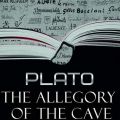
|
These poems are about “the moment inside the body / when joy is not born as much as it is made out of anything / the rest of the world doesn’t want.” Using land and South Texas’s flora and fauna as references, these poems explore aloneness and manhood as articulations of want, asking the reader to “take a moan by the hand, see what good it does.” Thematically, these poems address loss after transformative experiences, admitting to a reader, “All night I might fathom taking back / something precious / that somehow, / long ago, or not so long ago, I don’t know, / ripped off, / yanked from bone, / sloughed off like a husk.” These poems are about getting to know one’s body after being distanced from it, of recognizing a queer brown body inextricably belonging to lineages of loss, and then realizing that some new body has emerged from where the old parts were lost, or taken, as in the final sequence of four poems, “Lechuza Sketches,” where the speaker manifests the Tex-Mexican folkloric figure of a lechuza, the human-owl hybrid said to inhabit parts of South Texas and the Northern Mexican border. In the end, this is a collection of poems about more deeply engaging with one’s queerness, one’s brownness, and understanding that there are parts inside us we never knew existed, or as the Lechuza Sketches speaker offers, “In the world, some part of us is often / unseen / & not glorious. / But what if we are? / Glorious. Seen.” Получить ссылку |
 The Persistence of Allegory
The Persistence of Allegory
Автор: Jane K. Brown
Год издания:
In an impressively comparative work, Jane K. Brown explores the tension in European drama between allegory and neoclassicism from the sixteenth through the nineteenth century. Imitation of nature is generally thought to triumph over religious allegory in the Elizabethan and French classical theater, a shift attributable to the recovery of Aristotle's Poetics in the Renaissance. But if Aristotle's terminology was rapidly assimilated, Brown demonstrates that change in dramatic practice took place only gradually and partially and that allegory was never fully cast off the stage. The book traces a complex history of neoclassicism in which new allegorical forms flourish and older ones are constantly revitalized. Brown reveals the allegorical survivals in the works of such major figures as Shakespeare, Calderón, Racine, Vondel, Metastasio, Goethe, and Wagner and reads tragedy, comedy, masque, opera, and school drama together rather than as separate developments. Throughout, she draws illuminating parallels to modes of representation in the visual arts. A work of broad interest to scholars, teachers, and students of theatrical form, The Persistence of Allegory presents a fundamental rethinking of the history of European drama.
 The Allegory of the Cave
The Allegory of the Cave
Автор: Платон
Год издания:
The Allegory of the Cave, or Plato's Cave, was presented by the Greek philosopher Plato in his work Republic (514a–520a) to compare «the effect of education (???????) and the lack of it on our nature». It is written as a dialogue between Plato's brother Glaucon and his mentor Socrates, narrated by the latter. The allegory is presented after the analogy of the sun (508b–509c) and the analogy of the divided line (509d–511e). All three are characterized in relation to dialectic at the end of Books VII and VIII (531d–534e). Plato has Socrates describe a group of people who have lived chained to the wall of a cave all of their lives, facing a blank wall. The people watch shadows projected on the wall from objects passing in front of a fire behind them, and give names to these shadows. The shadows are the prisoners' reality.





